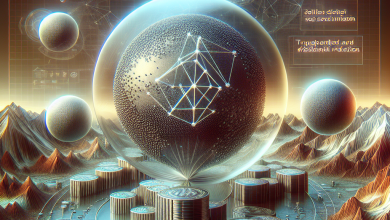DWF Ventures Analyzes USDT’s Potential to Lead the Stablecoin Market Competition
Overview
In the ever-evolving world of cryptocurrency and blockchain technology, DWF Ventures, a key player in the web3 investment landscape, has recently published a detailed report shedding light on the future of stablecoins. This report places a particular focus on Tether’s USDT and emerging scaling solutions like Plasma and Stable, showcasing how purpose-built chains are set to revolutionize the global adoption of USDT by tackling compliance and scalability challenges head-on.
Stablecoins have come a long way from their origins as synthetic alternatives to traditional currencies. They now power an astonishing $27 trillion in transfer volume, outpacing industry giants like Visa and Mastercard. The versatility of stablecoins is evident in their application across various sectors, from hedging against inflation to facilitating global payroll, remittances, and even consumer fintech solutions. The US Treasury Secretary’s forecast of a $2 trillion stablecoin market by 2028 underscores the growing significance of these digital assets, especially in light of recent milestones like Circle’s IPO and the GENIUS Act.
Despite the remarkable progress made in the stablecoin space, DWF Ventures’ analysis uncovers several inefficiencies that continue to plague the ecosystem. These include liquidity fragmentation across different chains, opacity in transaction processes, intricate fiat onramps, and susceptibility to regulatory changes. The reliance on specific blockchain networks poses risks for both issuers and users, given the fluctuating fees and operational challenges, particularly as the majority of transactions are concentrated on platforms like Tron and Ethereum.
At the forefront of the stablecoin landscape stands Tether, commanding a substantial 62% market share and corresponding revenue. USDT, along with Circle’s USDC, accounts for a whopping 83% of stablecoin transactions. This dominance has paved the way for innovative projects like Stable and Plasma, supported by Tether, which aim to optimize USDT for a broader array of applications, ranging from everyday payments to cross-border remittances and enterprise-grade DeFi solutions.
Stable, a Layer 1 blockchain compatible with the Ethereum Virtual Machine (EVM), represents a pioneering approach to stablecoin infrastructure. Offering zero gas fees on USDT transfers and native USDT gas payments, Stable sets itself apart as the first standalone Layer 1 solution to provide this functionality. By leveraging cutting-edge features such as LayerZero bridging, native liquidity pools on its network, institutional compliance tools, off-chain sequencing, and a dedicated mempool for corporate clients, Stable unlocks a realm of possibilities for low-cost, scalable transactions.
On the other hand, Plasma, an EVM-compatible sidechain for Bitcoin, has rapidly gained traction, reaching a $1 billion deposit cap ahead of its highly anticipated XPL public sale. Positioned as an enabler of on-chain merchant transactions, remittances, commodity trading, and yield generation for stablecoins and Bitcoin, Plasma boasts innovative features like whitelisted token gas fees and feeless USDT transactions, catering to the diverse needs of users seeking efficient, cost-effective blockchain solutions.
In conclusion, the future of stablecoins appears promising, with advancements in blockchain technology paving the way for enhanced scalability, interoperability, and user experience. As industry players continue to innovate and address the existing challenges within the stablecoin ecosystem, we can expect to witness a surge in adoption, further blurring the lines between traditional finance and decentralized digital assets. The evolution of stablecoins like USDT, coupled with groundbreaking projects like Stable and Plasma, is poised to shape the financial landscape of tomorrow, offering unparalleled opportunities for individuals and institutions alike to harness the power of blockchain innovation for a more secure and efficient financial future.



